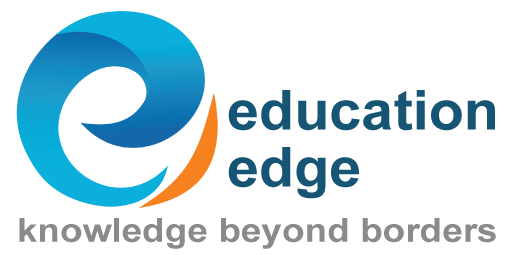
Project Management Professional (PMP) certification is one of the most sought-after credentials for project managers across industries. With the increasing demand for PMP-certified professionals, working professionals need to choose the right training method that aligns with their schedules and learning preferences. The two primary options for PMP training are classroom-based and online formats, each offering unique benefits and challenges.
In this blog, we will explore the differences between classroom PMP training and online PMP training, particularly for working professionals, and help you decide which option is the best fit for you.
Overview of Classroom PMP Training

Classroom-based PMP training typically offers instructor-led sessions conducted at a physical location. These sessions are designed to provide an immersive learning experience where you can directly interact with the instructor and fellow participants.
Key Features of Classroom PMP Training
Classroom PMP training offers a traditional and structured approach to learning, with several benefits that can help professionals gain in-depth project management knowledge. Here are some key features of classroom-based PMP training:
- Instructor-Led Sessions: Classroom PMP training often follows a structured schedule, where an instructor leads the sessions, guiding you through the course material. This method is particularly beneficial for individuals who prefer live, interactive training.
- Immediate Feedback: One of the biggest advantages of classroom training is the ability to ask questions and get immediate feedback. Whether you’re having difficulty understanding a concept or need clarification on a topic, classroom training provides a space for real-time interaction.
- Peer Networking: Being in a classroom allows you to interact with fellow professionals, share insights, and network with peers. For those who value collaborative learning and networking opportunities, classroom training can be highly beneficial.
- Fixed Schedule: Classroom PMP training typically requires you to attend classes at fixed times, which may be a challenge for busy professionals. However, for those who prefer structure, this can help ensure regular study and progress.
Drawbacks of Classroom PMP Training
- Limited Flexibility: Classroom training often requires you to adhere to a specific schedule and location, which can be difficult for working professionals with busy schedules.
- Travel and Time Constraints: You may need to commute to the training center, which could add extra time and cost, especially if the center is not nearby.
- Higher Costs: Classroom training is generally more expensive due to the costs associated with renting physical space and having instructors present in person.
Overview of Online PMP Training

Online PMP training has become increasingly popular, offering flexibility and convenience for working professionals. With the rise of digital platforms, you can now access PMP exam prep courses online, allowing you to study at your own pace and on your schedule.
Key Features of Online PMP Training
- Self-Paced Learning: One of the primary benefits of online PMP training is the self-paced format. You can access the material anytime and anywhere, allowing you to fit your study sessions around your work and personal life. This flexibility is ideal for professionals who need to balance their training with their full-time jobs.
- Instructor-Led Options: While online training is often self-paced, many platforms also offer live PMP training sessions where instructors guide you through the material. This option provides the flexibility of online learning with the benefit of real-time interaction.
- Comprehensive Study Materials: Online courses often come with a variety of study materials, such as video lectures, quizzes, practice exams, and reading resources. Some programs offer project management professional PMP training materials that mirror the PMP exam content, ensuring you’re well-prepared for the test.
- Cost-Effective: Online PMP training is typically more affordable than classroom training because it eliminates the costs associated with physical venues and instructor travel. Additionally, many online courses offer payment plans or are available for a one-time fee.
Drawbacks of Online PMP Training
- Less Interaction: Although live PMP training sessions are available, the overall level of interaction with instructors and peers may be lower compared to classroom settings.
- Self-Motivation Required: Online learning requires a high level of self-discipline. You must be motivated to keep pace with the course and ensure that you complete all modules before the exam. This may be difficult for professionals who struggle with self-directed learning.
- Potential for Isolation: While online forums and virtual groups may provide some interaction, it is not the same as the networking opportunities available in a classroom environment.
Online vs Classroom: Key Differences for Working Professionals
When it comes to choosing between online and classroom-based PMP training, working professionals need to carefully weigh factors like flexibility, engagement, and cost. Let’s look at the key differences between the two formats:
1. Flexibility and Convenience
- Classroom Training: Classroom-based training typically follows a rigid schedule, requiring you to attend classes at set times and locations. This can be challenging for working professionals who need to balance training with their jobs and personal lives. Travel time and commuting can further add to the inconvenience.
- Online Training: Online PMP training offers unparalleled flexibility. With self-paced PMP training, you can study when it fits your schedule—whether that’s early mornings, during lunch breaks, or late at night. This flexibility is especially helpful for working professionals who may not be able to commit to fixed classroom schedules.
2. Learning Environment
- Classroom Training: Classroom sessions provide a structured, distraction-free environment, which may be beneficial for individuals who need structure and guidance. The instructor can answer questions immediately, and you benefit from peer discussions, group activities, and face-to-face interactions.
- Online Training: PMP certification classes online offer convenience but may lack the immediate feedback and real-time collaboration that classroom training provides. However, many online platforms offer interactive elements such as live sessions, forums, and Q&A opportunities, which can replicate the classroom experience to some degree.
3. Cost
- Classroom Training: Classroom PMP training is often more expensive due to venue costs, instructor fees, and the physical materials provided. For those on a budget, this can be a significant barrier.
- Online Training: Online PMP training is generally more affordable. You can also find PMP certification prep course online options that offer one-time fees or subscription-based models, which makes it a more cost-effective option for working professionals looking to keep expenses down.
4. Engagement and Support
- Classroom Training: Instructor-led PMP training in a classroom allows for more personal interaction with instructors, enabling you to ask questions on the spot and receive immediate feedback. You also have the chance to network with other professionals in your field.
- Online Training: While many online PMP courses offer live PMP training or discussion forums for interaction, you may not have the same level of personal engagement. However, you can often reach out to instructors via email or message boards for support.
Which One Should You Choose?
Classroom Training
Best for those who:
- Prefer in-person, instructor-led training
- Value immediate feedback and peer interaction
- Can commit to a fixed schedule
- Want a structured learning environment
Online Training
Best for those who:
- Have a busy schedule and need flexibility to study at their own pace
- Prefer to learn at their own speed, without a fixed timetable
- Are looking for cost-effective options
- Need the option of self-paced PMP training but still desire live instructor sessions
Conclusion
When choosing between online PMP training and classroom PMP training, it ultimately depends on your personal learning style, schedule, and budget. For working professionals, online PMP courses offer more flexibility and convenience, while classroom training provides a more structured, immersive experience with live interaction.
If you are looking for a blend of flexibility, structure, and expert guidance, Education Edge offers both self-paced and instructor-led online PMP training options. Their PMP exam prep course online ensures that you get the best of both worlds, live sessions and comprehensive study materials.
Ultimately, whether you choose PMP classroom training or an online PMP course, the key is to ensure that your chosen format aligns with your career goals, learning preferences, and time availability.
FAQs
Which is better for working professionals: Online or Classroom PMP training?
The answer depends on your learning style and schedule. If you’re a working professional, online PMP training is often better because it offers flexibility and allows you to learn at your own pace without having to commit to a fixed class schedule. You can study during breaks, evenings, or weekends. However, if you prefer structured learning, real-time interaction with instructors, and networking opportunities, classroom training might be more beneficial.
Is online PMP training effective?
Yes, online PMP training is effective, provided the course is comprehensive, follows the PMBOK® Guide (Project Management Body of Knowledge), and includes high-quality study materials like practice exams and interactive resources. Many online courses also offer live instructor-led sessions, which enhance the learning experience.
How much time do I need for online PMP training?
The amount of time you need for online PMP training depends on the course structure and your existing knowledge of project management. On average, most professionals spend 3 to 6 months preparing for the exam, dedicating about 8-10 hours per week.
Do online PMP courses provide 35 contact hours?
Yes, online PMP training courses are designed to meet PMI’s requirement of 35 contact hours of project management education. These contact hours are necessary for eligibility to sit for the PMP exam. Most reputable online PMP courses include interactive modules, instructor-led sessions, and other activities that fulfill this requirement.
Can I pass PMP without classroom training?
Yes, you can pass the PMP exam without classroom training, especially if you opt for a comprehensive online PMP training course. As long as you complete the required 35 contact hours and study diligently, many people pass the exam through online training alone. The key is consistency, using quality resources, and practicing with mock exams.







